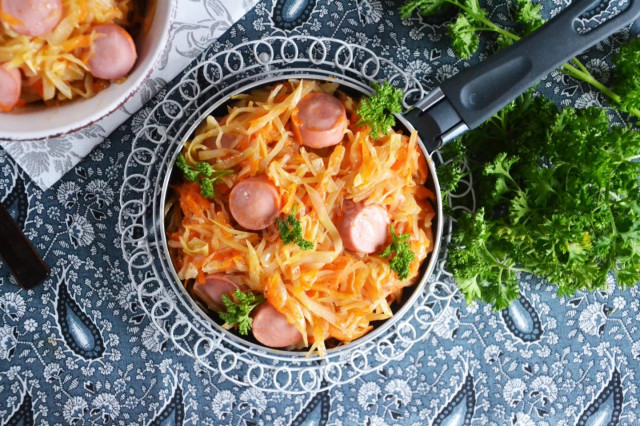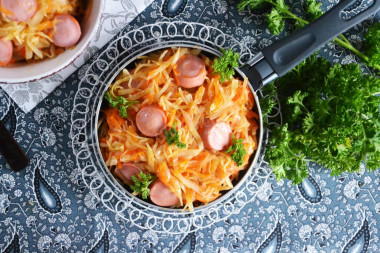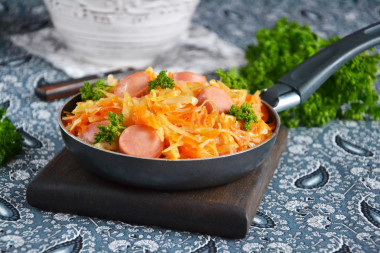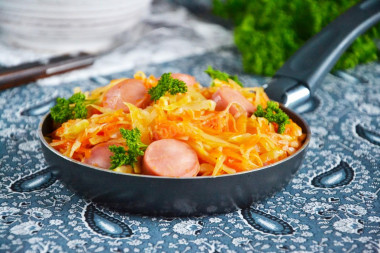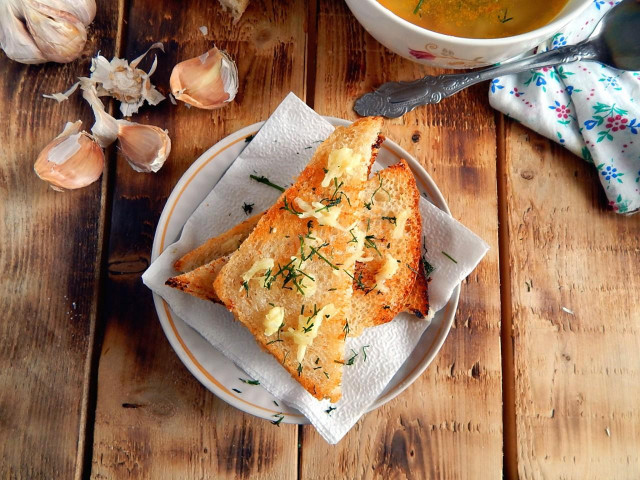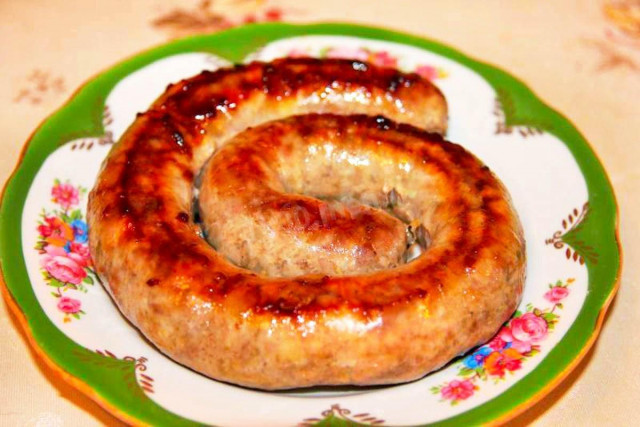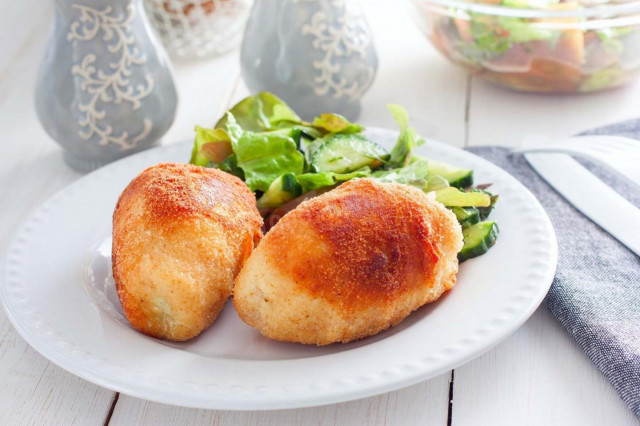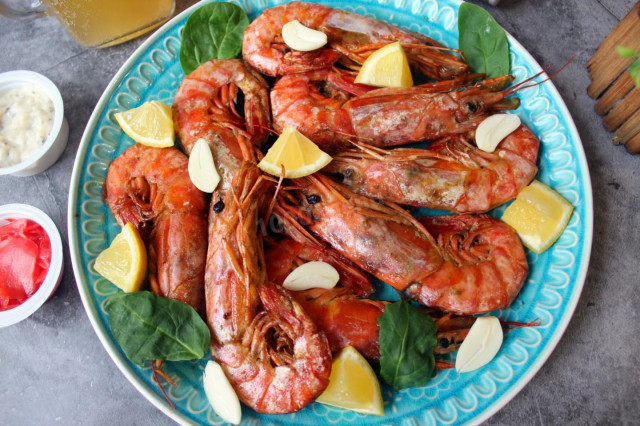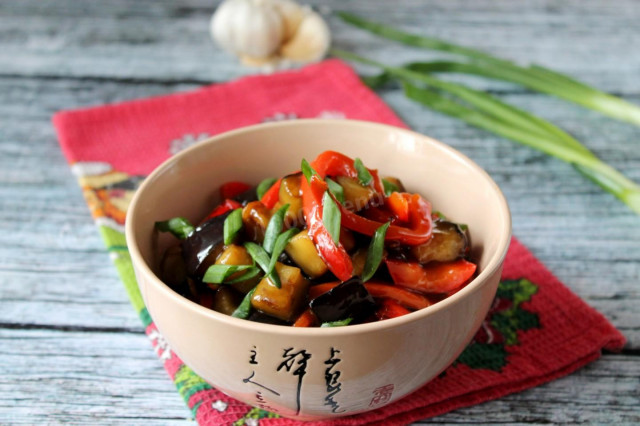Composition / ingredients
Step-by-step cooking
Step 1:
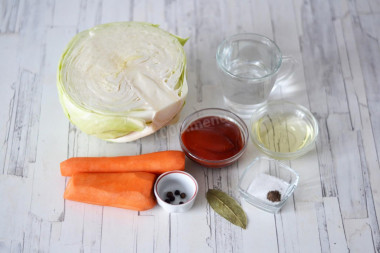
How to put out cabbage in a frying pan with sausages? Prepare all the necessary ingredients. Take the cabbage juicy, if possible fresh, not stale. It should be bright green or white, without strong scuffs, with elastic juicy leaves. Tomato paste can be replaced with ketchup. In addition to the ingredients specified in the recipe, you can add one finely chopped onion.
Step 2:
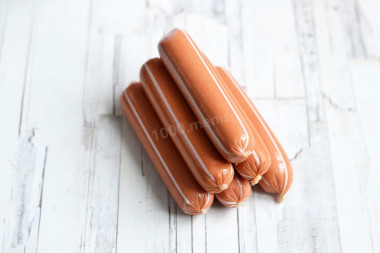
You can use any sausages for the dish. But it should be borne in mind that they can greatly affect the final taste of the dish. For example, if you take sausages with a pronounced smoked taste, then you will also have the whole dish with a light taste of smoked meat. If you need a neutral taste, take ordinary sausages, such as milk or cream. Peel the sausages from the factory film and cut them into not very thin circles.
Step 3:
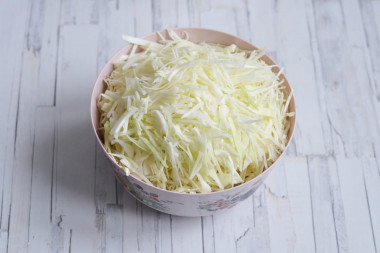
Wash the cabbage, cut out the stalk and finely chop it, bypassing the dense parts of the leaves near the stalk.
Step 4:
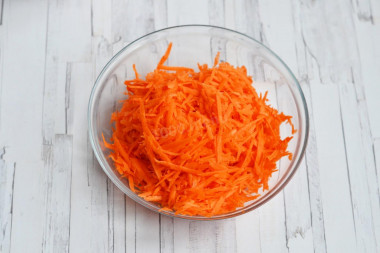
Peel the carrots and grate them on a coarse grater.
Step 5:
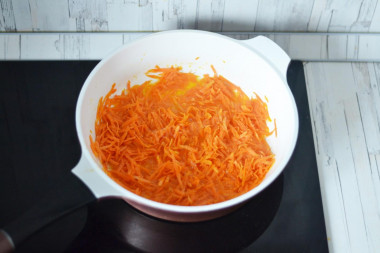
In a deep frying pan with a thick bottom, heat the vegetable oil. Put the grated carrots and fry over medium heat (I have a 5 out of 9 mode) until soft for about 5 minutes. If you want to add chopped onions to the cabbage, then it should be put together with carrots.
Step 6:
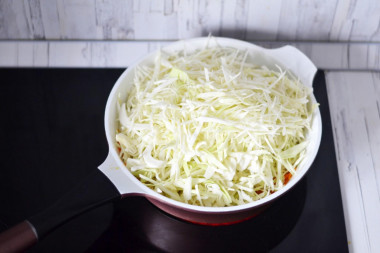
Add the cabbage and mix thoroughly with the carrots. At first, cabbage takes up a lot of space, but as it stews, excess moisture will evaporate from it and the cabbage layer will settle heavily. Therefore, if you see that the whole cabbage does not fit in the pan, then add it in parts and as it settles, add more and mix.
Step 7:
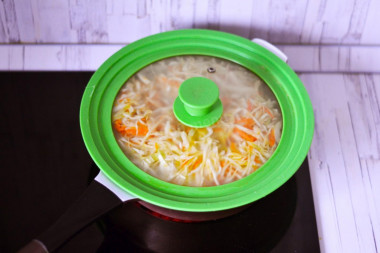
Simmer cabbage and carrots on low heat under the lid for about 15 minutes.
Step 8:
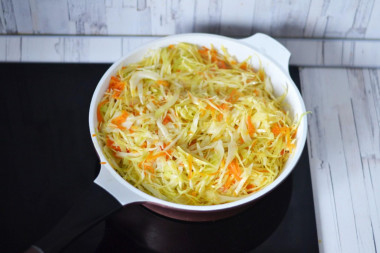
Pour in a glass of boiling water and simmer further under the lid until the cabbage is soft for about 30 minutes. If the cabbage is young, then it will take a little less time. If it's hard, then a little longer. Therefore, periodically check the readiness of cabbage.
Step 9:
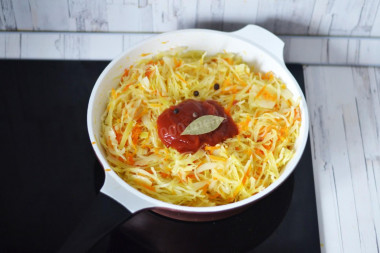
Add tomato paste, bay leaf and allspice to the cabbage. Stir and simmer on low heat for about 7 minutes.
Step 10:
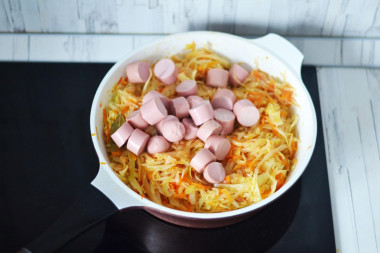
Pour the prepared sausages to the cabbage and mix. Simmer all together for about 5 more minutes. Taste the cabbage and, if necessary, add salt and pepper. It is advisable to salt and pepper at the end, since after adding tomato paste and sausages, the dish may no longer need additional spices. A lot depends on the degree of salinity of tomato paste and sausages.
Step 11:
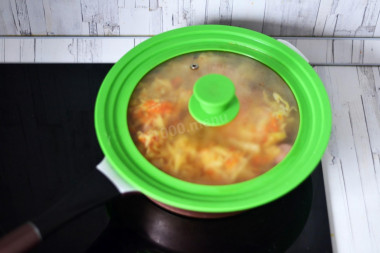
Remove the finished cabbage from the heat and let it stand under the lid for about 10 minutes. Bon appetit!
Use oil with a high smoking temperature for frying! Any oils are useful only until a certain temperature is reached - the point of smoking, at which the oil begins to burn and toxic substances, including carcinogens, are formed in it.
Unrefined oils, with rare exceptions, have a low smoking point. There are a lot of unfiltered organic particles in them, which quickly begin to burn.
Refined oils are more resistant to heating, and their smoking point is higher. If you are going to cook food in the oven, on a frying pan or grill, make sure that you use oil with a high smoking point. The most common of the oils with a high smoking point: refined varieties of sunflower, olive and grape.
For cooking, it is better to use filtered or bottled water that is neutral to taste. If you use tap water, keep in mind that it can give the dish an unpleasant characteristic taste.
Caloric content of the products possible in the composition of the dish
- Carrots - 33 kcal/100g
- Dried carrots - 275 kcal/100g
- Boiled carrots - 25 kcal/100g
- Bay leaf - 313 kcal/100g
- Ground black pepper - 255 kcal/100g
- Vegetable oil - 873 kcal/100g
- Tomato paste - 28 kcal/100g
- Salt - 0 kcal/100g
- Milk sausages - 266 kcal/100g
- Russian sausages - 243 kcal/100g
- Pork sausages - 324 kcal/100g
- Canned sausages - 228 kcal/100g
- Water - 0 kcal/100g
- White cabbage - 28 kcal/100g
- Boiled white cabbage - 21 kcal/100g
- Allspice - 263 kcal/100g

